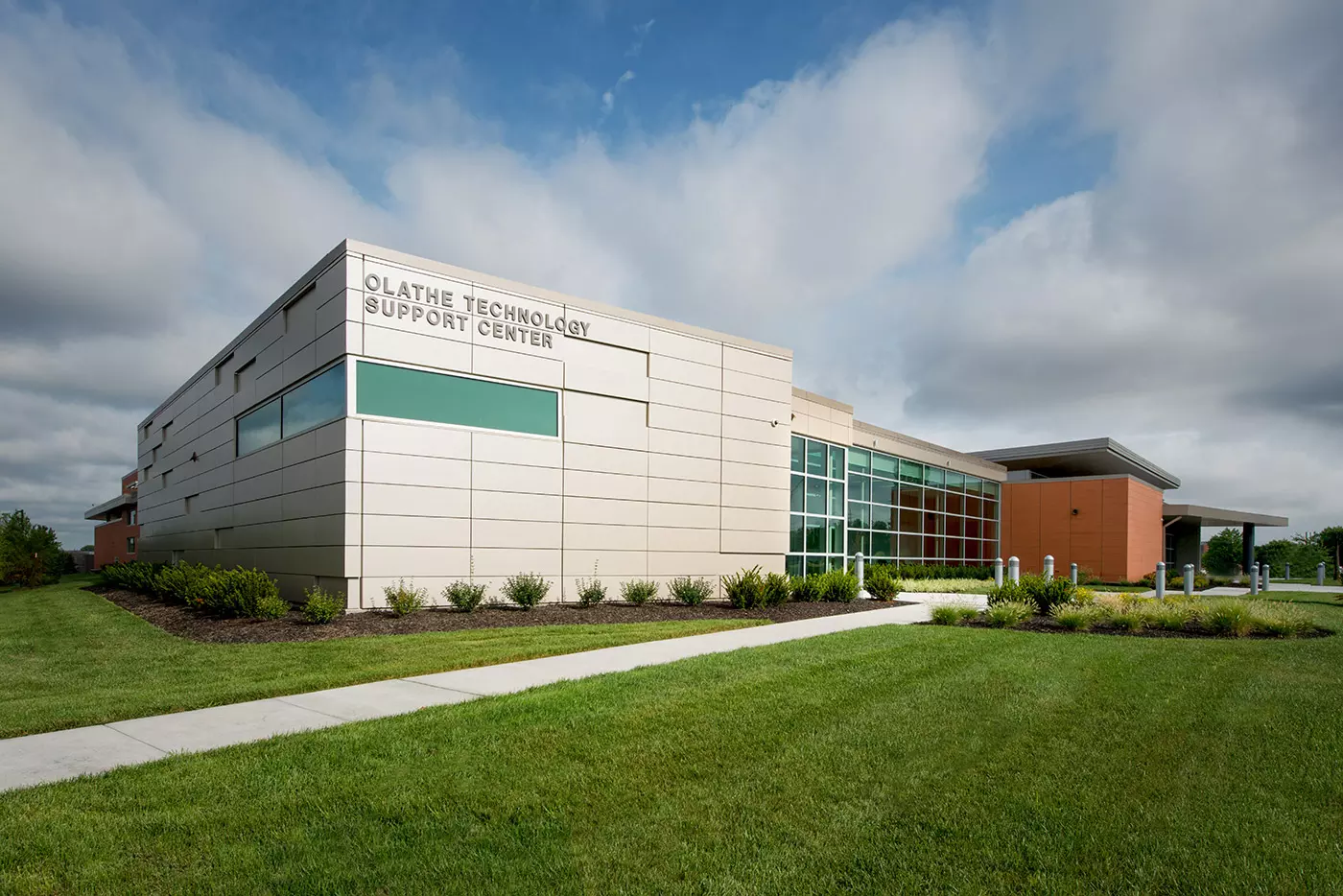August 13, 2025

When you think of a school district’s most important buildings, classrooms and gyms might come to mind. But in Olathe, Kansas, one of the most vital facilities isn’t filled with students — it’s filled with servers.
The Olathe School District Technology Support Center, built in 2014, is the nerve center of the district’s digital infrastructure. Inside its 25,000 square feet, you’ll find a storm-hardened Network Operations Center (NOC) that manages internet access and network services for every school, a broadcast studio where educational content is produced, training rooms for staff development, and offices for the district’s IT professionals.
It’s the kind of facility where HVAC is more than just comfort. It’s mission-critical.
By 2023, the Technology Support Center’s original Variable Refrigerant Flow (VRF) HVAC system was entering its ninth year — and showing signs of fatigue. VRF systems can be efficient when new, but as the equipment aged, the district began seeing:
For the NOC, even a short disruption in cooling could risk overheating sensitive equipment. And for training rooms, production suites, and open offices, discomfort could disrupt daily operations.
The district needed a solution that would not only address immediate performance issues but also provide long-term reliability, easier maintenance, and measurable energy savings.
Custom Mechanical Equipment proposed a different approach than simply replacing the VRF with another centralized system. Instead, CME recommended two 45-ton gas/electric modular multizone units — a design that fundamentally changes how large buildings are heated and cooled.
Here’s what made the difference:
After a full year of operation, the district compared utility bills to the five-year average before the upgrade. The results were striking:
Even more important? Reliability and comfort improved across the board. Facility managers no longer worried about a single breakdown shutting down the building, and IT staff noticed more stable temperatures in critical areas.
The modular system’s efficiency advantage comes from only running the equipment that’s needed. In a VRF system, compressors often run even for small cooling or heating demands, leading to inefficiency over time. CME’s design allows individual modules to shut off when not required, saving energy and reducing wear.
Maintenance is also simpler. VRF systems often require specialized tools, parts, and training, which can delay repairs. CME’s multizone systems use familiar components most HVAC technicians can service quickly.
And for mission-critical facilities like Olathe’s Technology Support Center, redundancy is key. With VRF, a major failure can impact an entire building wing. With CME’s modular design, issues are contained to a single zone, keeping essential areas — like the NOC — operational at all times.
The Olathe project is a proof point for other schools, municipal facilities, and data centers considering HVAC upgrades. Energy savings are important, but in environments where uptime is essential, reliability is priceless.
As the district looks to the future, the Technology Support Center is now better equipped to handle Kansas weather extremes, fluctuating occupancy patterns, and the demands of a growing technology infrastructure.
If your facility can’t afford downtime, CME’s modular multizone technology might be the difference between business as usual and an operational crisis.

Our dedicated support team is here to assist you every step of the way, ensuring you have the guidance and assistance.